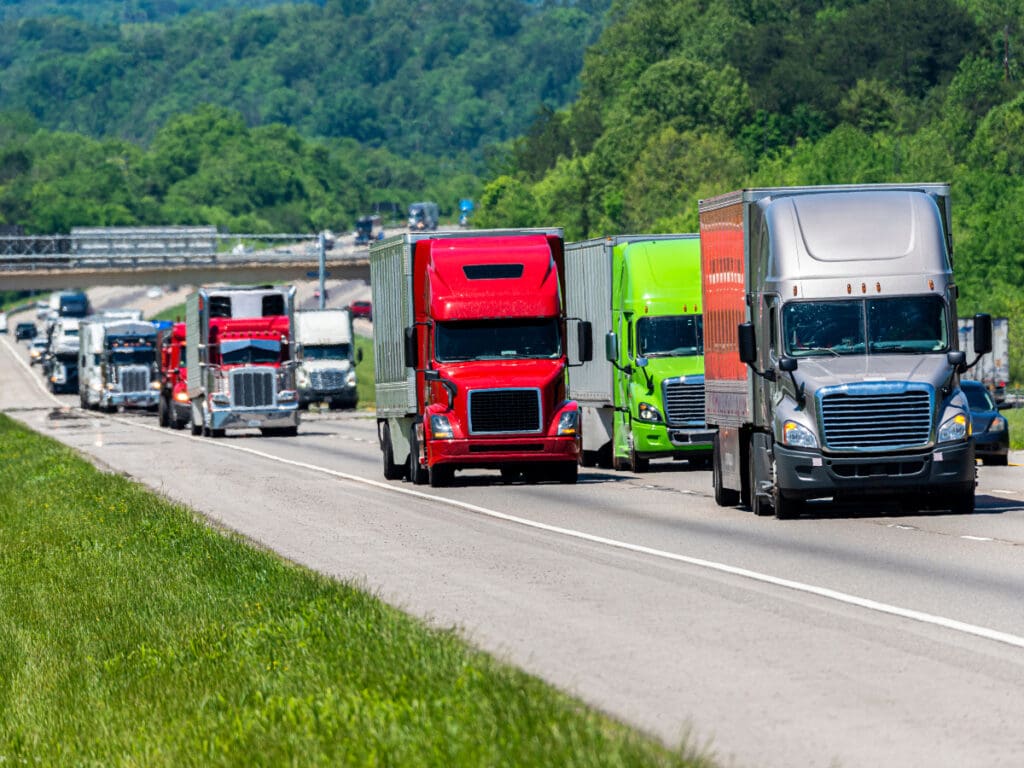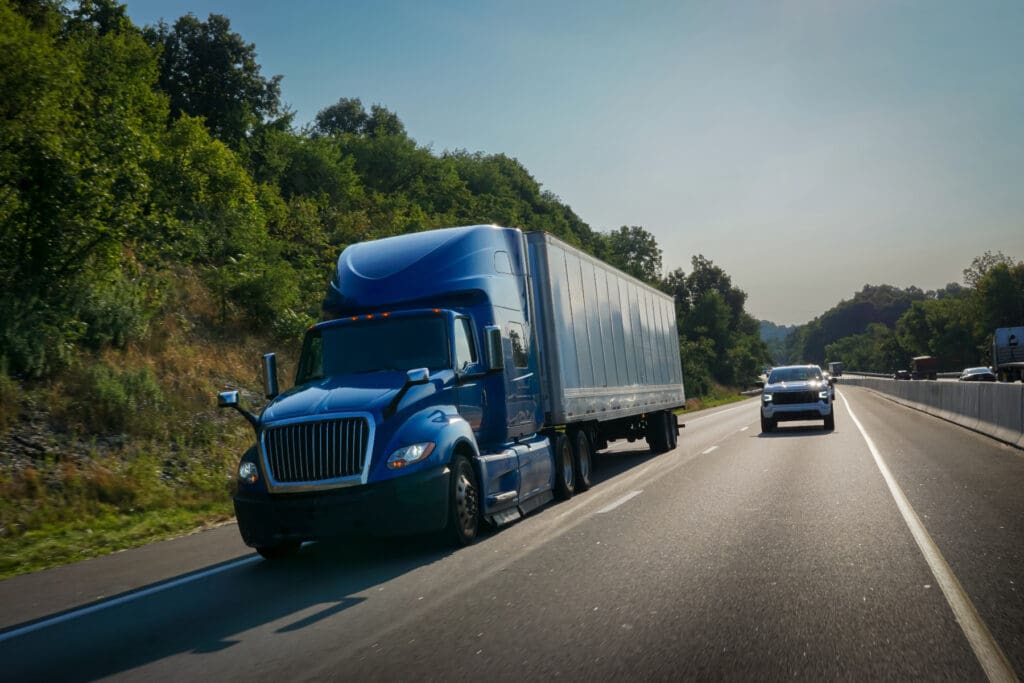Taylor King Blog
What to Do After a Car Accident
We all know how nerve wracking it can be driving behind or next to a big rig. For starters, 18-wheelers are massive. A big rig can weigh up to 40 tons while most passenger vehicles weigh less than 2 tons. In addition to their imposing size, big trucks have several limitations such as large blind spots, long stopping distances, and limited maneuverability.
Fortunately, you can take simple actions while on the road next to big rigs in order to stay safe.
Here are 6 tips that you can follow to keep you and truckers safe on the roadways:
Let’s dive into each one a little deeper and ensure you’re prepared to share the road with big rigs.
Trucks and buses have much larger blind spots on the front, back, and sides of their vehicles. Remember this rule: if you can’t see them, they can’t see you. Meaning, if you can’t see the driver in their truck’s mirror, then you it’s safe to assume that they can’t see you either.
Avoid driving in a truck’s blind spot. You can either slow down so you’re not driving along in their blind spot or you can accelerate and move ahead where you’ll be more visible to the driver.
Blind spots are important to keep in mind when merging too!
Passing a tractor-trailer on the freeway? First, signal clearly. Then merge into the passing lane and accelerate so you can pass them safely. When reentering the truck’s righthand lane after passing, signal clearly again and make sure there’s plenty of room.
Remember when passing to not linger in their blind spot, and also make sure the truck/bus are visible in your own rear view mirror.
Use caution when passing trucks or or large vehicles while on a downward slope because they tend to pick up speed.
Also, it’s never a good idea to pass an 18-wheeler on their righthand side. When a big vehicle passes you, always stay to the right and slow down. Giving them room helps you stay out of the blind spot.
Lastly, remember these tips and to give bigger vehicles plenty of space when merging onto the highway.
It’s never smart to cut off another driver, but it’s especially dangerous when involving a bus or large truck.
A fully loaded 18-wheeler driving at 75 mph can take the full length of a football field to come to a stop. Even the most experienced driver can’t slow down their vehicle when it’s that large. Truck drivers may not be able to avoid a crash if you pull in front of them.
Not to mention, truck’s have a blind spot in the front of their vehicle. If you cut in front of them too closely they may not even be able to see your vehicle.
Tailgating is a terrible idea. It’s an even worse idea if you’re tailgating an 18-wheeler. If you’re tailgating a tractor-trailer then you’re guaranteed to be in their blind spot.
And because 18-wheelers are so high off the ground, failing to stop in time if a large truck hits its brakes means your vehicle is likely to slide underneath the truck’s trailer.
Avoid getting too close to the back of an 18-wheeler while stopped, too, especially on a hill where the truck may be likely to roll backward.
Bigger vehicles like 18-wheelers and buses make wide turns because they require extra turning room. Truck and bus drivers must swing wide in order to make their turn. They may even start their turn from the middle lane if possible. Anticipate the wide turn!
Do not try to pass a truck, bus, or trailer when it has its turn signal on. Give them the extra room needed to make the turn.
A good rule is to not go past the box line when coming to a stop at an intersection as trucks and buses need that extra room when turning for safety reasons.
Trucks and buses have different motor functions and operating restrictions than regular passenger vehicles. Honking, driving aggressively, weaving through traffic makes the roads less safe for you, truck drivers, and everyone else on the road.
Be patient.
Give trucks and other large vehicles plenty of time. Swerving into the righthand lane to pass an 18-wheeler before it has the time and space to get over may save you a few seconds but it increases your chances of a wreck exponentially.

Now that we’ve covered our six tips for passing and driving alongside 18-wheelers, let’s look at four bonus tips every driver needs to know.
ALWAYS wear your seat belt! This is the most important thing you and your passengers can do in order to save your life in case of an accident. It can help keep you in your seat and maintain control of your car. Always keep your kids in the backseat and buckled up and in a car seat. All these things can help save your life in case of a crash involving a bus or big rig.
Never get on your phone while driving. This includes a text, call, GPS, app notification, etc. Distracted driving can be worse than driving impaired. Even eating and or drinking while driving or adjusting the radio can take your eyes off the road long enough for an accident to happen. Never underestimate the speed or distance of a truck or bus (particularly when making turns, merging, or lane changes).
Take regular breaks if needed when driving long amounts of time or switch places with a friend in order to nap before your next shift. It’s always better to get off the road and find a safe place to rest (not the side of the highway or any road) than to keep driving and trying to make it home.
Alcohol and drugs impair your judgment and reaction time while driving. There is no time that it is safe to drive while drinking, all limits are bad. Many medications can cause side effects that are dangerous while driving, specifically dizziness, sleepiness, and slow reaction time. If you see a warning on your medication, always take it seriously and have someone else drive you or find another way to your destination.
To learn more about recommended practices, visit the Department of Transportation’s website here: U.S. Department of Transportation and Motor Vehicles
If you’ve been involved in an accident with a large truck and need more information, visit our full page: Truck Accidents
Questions about a truck accident or the rules of the road? Call us at 800.305.0529, chat with a specialist online, or visit any of our seven offices across Arkansas.
We’ll be on your side – by your side.
Author: Chloe Veuleman
